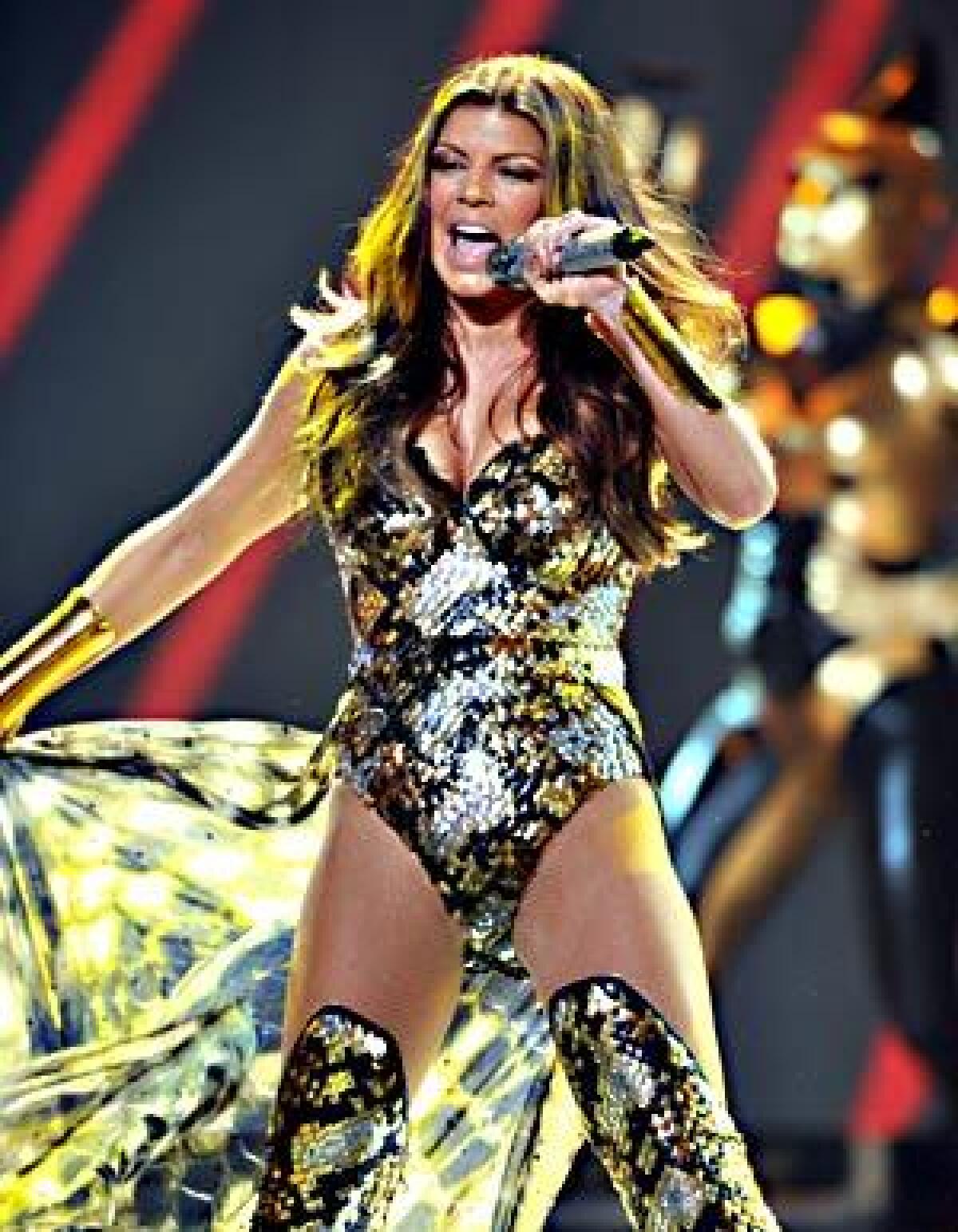California Design Biennial: Maverick spirit

The Pasadena Museum of California Art is presenting its California Design Biennial, “Action/Reaction,” starting July 18. And this year, the fashion section is shaping up to be a strong one.
The curator is Rose Apodaca, a former West Coast bureau chief for Women’s Wear Daily and contributing editor for the Los Angeles Times’ Image section. She is now co-owner of the design store A+R in Venice and author of a forthcoming biography on the king of Rodeo Drive retail, Fred Hayman.
FOR THE RECORD:
Fashion Diary: The July 11 Fashion Diary column on the California Design Biennial said the exhibition includes a dress that was made by designer Michael Schmidt for Debbie Harry and is covered in 300 razor blades. The dress has about 3,000 razor blades. —
For this project, she chose to highlight 11 California design talents influenced by varying forces including DIY culture and rock ‘n’ roll. The fashion section of the biennial will consist of nearly 100 elements, including shoes, garments, jewelry and images from designers such as Michael Schmidt, who has worked with Cher, Madonna and Janet Jackson; and Raven Kauffman, whose fantastical handbags decorated with feathers and beetle wings will be showcased in a birdcage.
“Every biennial sets out to consider the way designers are reacting to the forces of their time,” Apodaca said. “In recent years, the economy and the environment have been top of mind, so some people suggested I look at large, influential companies like American Apparel or focus on a showcase of green designers. But I’ve been increasingly questioning what the green movement is about. So many designers have their hearts in the right place, but they are not really executing green garments.”
Instead, she set her sights on designers whose work is “quality-made and classic — not boring, but also not so connected to a point in time,” she said. “Being green can mean quality over quantity.”
“I was interested in the way designers are carving out their own businesses, taking the risk of not working for a big company and having a secure paycheck, but instead creating their own hours and lifestyle, with an ethical environment for employees, where they can oversee quality and in many instances produce locally,” she said.
Among those included are Koi Suwannagate, best known for repurposed cashmere sweaters with delicate sculpted rosettes and cutouts; Gregory Parkinson, who hand-dyes his bohemian-inspired mix-and-match pieces; Annie Costello Brown, whose rough-hewn jewelry mixes pearls and chains with leather; and Michel Berandi, whose biker-Goth-glam clothing is a mash-up of subcultures that mirrors those in the Golden State.
In one way or another, all the designers are rebelling against California’s image as a purveyor of mass-produced denim and casual sportswear. Calleen Cordero employs 45 people at her factory in North Hollywood to handcraft leather shoes and accessories studded with semiprecious stones. George Esquivel produces his men’s and women’s shoes with a lived-in look at a factory in Buena Park. “They’ve both been working for more than a decade, slow and steady. They’re not necessarily household names, but they have nice lives. And it’s amazing to see the respect between the designers and the employees,” Apodaca said.
Another unifying theme is a maverick spirit. Schmidt makes one-of-a-kind pieces for the rock ‘n’ roll set. One dress in the exhibition, made for Debbie Harry, is covered in 300 razor blades. Another, worn by Fergie on “American Idol,” is flecked with handsewn metal scales. “He considers himself a jewelry maker who happens to make clothes,” Apodaca said.
Tanya Aguiñiga of Atwater Village also defies categorization. She’s a textile designer who covers folding chairs, lounges and stools in felt but also makes rope necklaces that she twists and knots and hand dips.
One of Apodaca’s newest discoveries is gr.dano, by San Francisco-based designer Brian Scheyer and Jill Giordano, who teaches pattern making at the Academy of Art. The clothes, many of them in jersey, have a California ease and an avant-garde spirit. “I saw the clothing on a lark and was really amazed with draping and pattern work,” Apodaca said. “The designers emphasize technique and skill, and employ local sewers.”
For the first time, there’s a beauty line included: Strange Invisible Perfumes, the Venice-based fragrance house founded in 2000 by Alexandra Balahoutis. “It’s shocking that beauty hasn’t been included, given the importance of California’s independent beauty scene since the dawn of Hollywood,” Apodaca said, impressed by Balahoutis’ organic approach to the business, distilling fragrances from certified organic materials.
“OK, let’s get it out of the way, Jerry Bruckheimer is her stepfather, which gives her some advantages,” Apodaca said. “But she is very passionate about her work. She doesn’t pretend to know it all, which is something you can say about all these designers. What’s even more interesting is that none of them know each other, which is very Los Angeles in its own way.”
It’s the countercultural vibe that has defined California fashion for the last several years, buoyed by the success of such designers as Rodarte’s Kate and Laura Mulleavy, recent winners of Cooper Hewitt’s 2010 National Design Award for fashion. The approach, as we have seen, doesn’t always lend itself well to the runway, which is what makes this biennial all the more compelling. It might just be the closest thing we have to a truly relevant Los Angeles Fashion Week.
“California Design Biennial: Action/Reaction,” July 18-Nov. 1, Pasadena Museum of California Art, or pmcaonline.org.
More to Read
The biggest entertainment stories
Get our big stories about Hollywood, film, television, music, arts, culture and more right in your inbox as soon as they publish.
You may occasionally receive promotional content from the Los Angeles Times.











